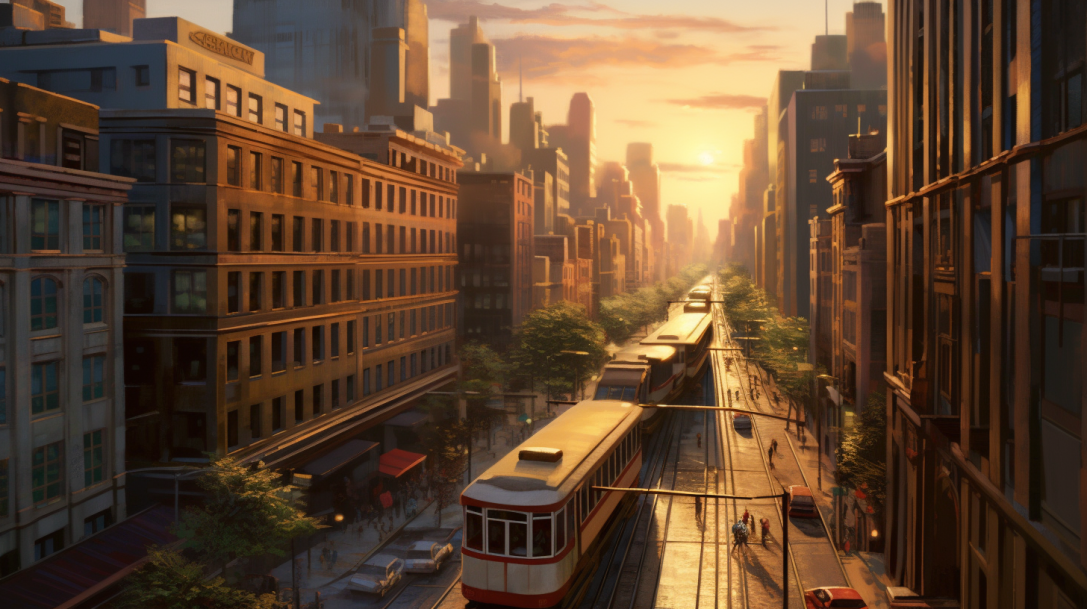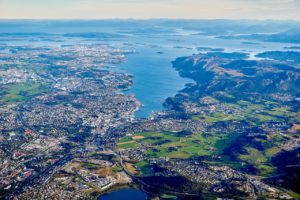
What Is Urban Sprawl? Buzzword or Environmental Catastrophe?
July 10, 2018 - Emily Newton
Revolutionized is reader-supported. When you buy through links on our site, we may earn an affiliate commision. Learn more here.
If you live in a city — or are at all environmentally savvy — you’ve probably heard the phrase urban sprawl. It’s a buzzword used by city planners and environmentalists alike, but what does urban sprawl really mean?
Let’s take a closer look at the term, its environmental effect and what city planners can do to reduce the impact of our sprawling cities.
Define Urban Sprawl
First, let’s define the term urban sprawl. According to the Oxford Dictionary, urban sprawl is defined as the “uncontrolled expansion of urban areas” specifically into nearby suburban and rural areas. Essentially, when city-dwellers get fed up with their crowded surroundings, so they spread out into nearby less developed regions. They move out of the city trying to find a better place to live, raise their children and grow old without having to navigate the hustle and bustle of city life.
While this is an excellent thing for architects, engineers and city planners who have to design the infrastructure for these new suburban areas, it’s not the best for the environment.
Urban sprawl isn’t a new concept. It’s something that has existed since humans stopped being hunter-gatherer tribe members and started to settle down into communities. When the community gets too crowded, people begin branching off into other areas. This leads to new cities and suburbs until their population spread out across the landscape.
Why Do Urban Population Centers Sprawl?
Other than the desire to get away from large groups of people, what causes urban sprawl? One factor is that land is often more affordable outside of the city, which encourages people to purchase small or large tracts of undeveloped land to carve out a place of their own. Rising income levels in many industries mean people have more money to support a further commute to and from work.
Moving out of the city, where space is often at a premium, also means people can afford to have larger and more elaborate homes. They can also be as loud as they want — within reason — without having to worry about their downstairs neighbors complaining.
A lack of urban planning can also create damaging sprawl — just look at Houston, Texas. The lack of urban planning and uncontrolled sprawl created a perfect storm that contributed to the devastating flooding after Hurricane Harvey made landfall in 2017.
Whatever the reason, urban sprawl is happening, and it is damaging the environment.
Damaging Effects
What effect does urban sprawl have on the environment? A few include:
- Increased Levels of Air and Water Pollution: More people means more pollution and even the eco-friendliest suburb produces some pollution.
- Larger Commute-Related Carbon Footprint: Just because people are moving to the suburbs doesn’t mean they’re also investing in electric cars. They’re driving further and further to work, which increases their carbon footprint.
- Vacant Buildings: When a suburb runs out of money, people often abandon it. This leaves empty houses and businesses dotting the landscape, which deteriorate and release chemicals into the surrounding land.
- Animal Habitat Destruction: When you cut down a forest to perpetuate urban sprawl, you are destroying the habitats of potentially hundreds of plants, animals and insects. Those with large populations might move, but those with small populations or specific environmental needs might end up going extinct.
- Fewer Farms: We don’t have a food shortage — yet — but when you take over farmland to build suburban housing, you lessen the land’s agriculture capacity and make it harder for farmers to meet their yearly harvest quotas.
Changes and the Future
With all these adverse effects, what can we do to slow down urban sprawl?
Some cities are already taking steps to reduce the impact of this uncontrolled growth. Shanghai, China, is building “sponge cities” that replace impermeable concrete and asphalt with permeable substances that allow stormwater to absorb into the ground rather than flooding the cities. Houston is also looking at solutions to reduce urban sprawl and prevent floods like the devastating ones in 2017.
The key here is a combination of smart growth and new urbanism. Smart growth relies on city planners to make intelligent choices for their urban and suburban environments. Creating urban centers that work with the land rather than taking it over needs to become a priority. New urbanism focuses on turning existing cities into places that don’t negatively impact the environment — reducing pollution, providing more avenues for foot and bicycle traffic and more.
There are currently upwards of 7.4 billion people on the planet. We’re expected to top 10 billion by 2050, and all those people will need places to live. We can still create and expand cities. However, we must remember to build them in such a way that we don’t damage the planet any further.
Revolutionized is reader-supported. When you buy through links on our site, we may earn an affiliate commision. Learn more here.
Author
Emily Newton
Emily Newton is a technology and industrial journalist and the Editor in Chief of Revolutionized. She manages the sites publishing schedule, SEO optimization and content strategy. Emily enjoys writing and researching articles about how technology is changing every industry. When she isn't working, Emily enjoys playing video games or curling up with a good book.




